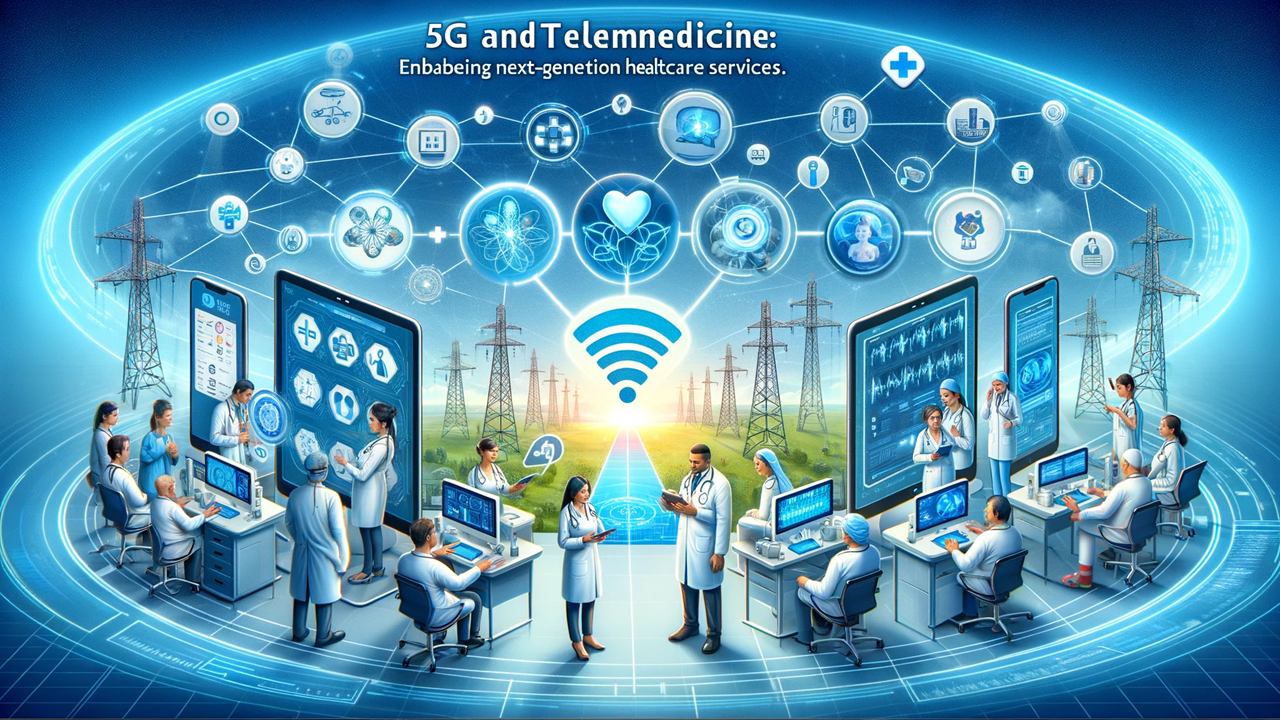5G and Telemedicine: Enabling Next-Generation Healthcare Services
This article delves into the transformative impact of 5G technology on telemedicine, showcasing how it enables a new era of healthcare services. Through increased speed, reduced latency, and enhanced connectivity, 5G is making healthcare more accessible, efficient, and patient-centered than ever before.

In an age where technology and healthcare increasingly intersect, the advent of 5G connectivity is set to transform the landscape of medical services. This leap in telecommunications technology is not merely about faster internet speeds; it represents a paradigm shift in how healthcare providers deliver care, making telemedicine a cornerstone of next-generation healthcare services.
The Foundation of 5G in Healthcare
5G stands at the forefront of telecommunications innovation, promising speeds up to 100 times faster than its predecessor, 4G. Beyond speed, its low latency and the ability to connect more devices simultaneously are where its true potential lies, especially in the realm of healthcare. This enhanced connectivity is paving the way for telemedicine to expand its capabilities, offering services that were once constrained by the limitations of technology.
Transforming Telemedicine Services
The integration of 5G into telemedicine is revolutionizing patient care in several key areas:
Real-Time Remote Monitoring: With 5G's low latency, healthcare providers can monitor patients' health in real time, enabling prompt responses to any changes in condition. This is particularly vital for chronic disease management, where early intervention can prevent complications.
High-Quality Video Consultations: The superior speed and bandwidth of 5G ensure that video consultations are of high quality, making virtual visits as close to in-person appointments as possible. This not only enhances the patient experience but also allows doctors to make more accurate assessments.
Augmented and Virtual Reality in Training and Treatment: 5G's capabilities unlock the potential for augmented reality (AR) and virtual reality (VR) applications in healthcare. From providing immersive training for medical professionals to offering new forms of therapy to patients, these technologies can significantly enhance both education and patient care.
Facilitating Advanced Diagnostics: The ability to swiftly transmit large imaging files and other medical data without compromising quality means that specialists can review and diagnose conditions much faster, improving patient outcomes.
Emergency Response and Precision Medicine: In emergencies, every second counts. 5G can support ambulance services with real-time data transmission, ensuring that medical teams are better prepared upon the patient's arrival. Moreover, the aggregation and analysis of vast amounts of health data can drive advancements in precision medicine, tailoring treatments to individual genetic profiles.
Overcoming Barriers and Embracing Opportunities
Despite the promising potential of 5G in telemedicine, challenges remain. Infrastructure costs, cybersecurity concerns, and the digital divide are significant hurdles to universal adoption. However, the ongoing global rollout of 5G networks and continuous advancements in cybersecurity are addressing these issues, slowly but surely bridging the gap between potential and reality.
The Future of Healthcare with 5G
The integration of 5G into telemedicine is just the beginning. As this technology matures, its impact on healthcare will extend far beyond the current applications. Imagine a future where surgical robots can be controlled remotely in real-time, allowing specialists to perform procedures from miles away. Or a world where AI-powered diagnostics, fed by continuous data streams from wearable devices, can predict health issues before they arise.
This vision of healthcare is not only more efficient and effective but also more equitable. By making high-quality care accessible to remote and underserved communities, 5G has the potential to close the gap in healthcare disparities, ensuring that everyone, regardless of location, has access to the best possible treatments.
Conclusion
The convergence of 5G and telemedicine is ushering in a new era of healthcare, one that promises to be more accessible, personalized, and efficient. While challenges remain, the path forward is clear: embracing 5G technology in healthcare is not just an option but a necessity for building a healthier, more connected world. As we stand on the brink of this healthcare revolution, the potential for positive change is immense, with 5G connectivity at the heart of this transformation, powering the telemedicine evolution into uncharted territories of service and care.
Given its focus on the intersection of cutting-edge technology and healthcare provision, this article is most suited for the "Healthcare" and "Technology" sectors. It addresses the critical role of telecommunications advancements, particularly 5G, in enhancing telemedicine and the broader implications for healthcare services, appealing to professionals and stakeholders in both the healthcare industry and the tech community.










